1. Player motivation
1.1. Reinforcement
1.1.1. Fixed-interval
1.1.1.1. Low level of engagement
1.1.1.2. A worker gets a paycheck every 2 weeks
1.1.2. Variable ration
1.1.2.1. Slot machine
1.2. Why people play
1.2.1. To de-stress
1.2.2. To have fun
1.2.3. To socialize
1.2.4. To de-stress
1.2.5. To have fun
1.2.6. To have fun
1.2.7. To socialize
1.2.8. To socialize
1.3. Player types
1.3.1. Explorers
1.3.2. Achievers
1.3.2.1. the majority of system, site and product designers are high-achieving people. So you naturally infer that the majority of players are similarly inclined. This turns out not to be true at all. The majority are socializers
1.3.3. Socializers
1.3.3.1. The average person is looking to socialize, not win. Winning is not what drives society.
1.3.3.2. Socializers are the most universal
1.3.4. Killers
1.3.4.1. They have to win and someone else has to lose. Moreover, others need to see it happen or it wasn’t really a win
1.3.5. http://en.wikipedia.org/wiki/Bartle_Test
1.4. Intrinsic vs. Extrinsic motivation
1.4.1. when cash is introduced as a motivator, people’s performance on creative or complex tasks drops (Dan Pink)
1.4.2. Overjustification/replacement bias argues that replacing an intrinsic motivation with an extrinsic reward is a fairly easy thing to do
1.4.2.1. once you start giving someone a reward, you have to keep him in that reward loop forever. Because when you take it away, he will no longer possess the level of intrinsic motivation with which they began.
1.4.3. when we make the motivation extrinsic, we shift that locus of responsibility from hope to structure and process
1.4.4. when something is designed well, it feels intrinsic to the player
1.5. Progress to Mastery
1.5.1. Novice
1.5.2. Expert
1.5.3. Master
1.5.4. Expert
1.5.5. Expert
1.5.6. Master
1.5.7. Master
1.5.8. Visionary
1.5.9. your system should enable the player to stop at any level
1.5.10. Socializing actions should happen across all levels of the mastery chain
1.5.11. the game someone is playing at the novice level is different than the game someone else is playing at the expert or master levels
1.5.11.1. Elder game
1.6. Be the Sherpa
1.6.1. Your player is on her own journey
1.6.2. You must be the guide up the mountain. That is how you obtain long-term, enduring loyalty and connection from your players
1.6.3. Give them the status, access, power and stuff that gets them where they need to go. Do it right and they’ll forever be yours
1.7. Motivators
1.7.1. Personal - yo've accomplished X
1.7.2. Across group - you are the first who accomplished this
2. Fundamentals
2.1. Loyalty
2.1.1. "Купи 10, получи 11-ую бесплатно"
2.1.1.1. Цена приза/лояльности точно известна
2.1.2. SAPS
2.1.2.1. Status
2.1.2.1.1. Badges
2.1.2.1.2. Leader boards
2.1.2.2. Access
2.1.2.3. Power
2.1.2.4. Stuff
2.1.2.5. Цена приза/лояльности не определена
2.1.2.5.1. Игроки склонны переоценивать
2.2. The house always wins
2.2.1. Be house
2.2.2. Or get played
3. Exercises
3.1. RANK YOUR TOP 5 USER ACTIONS
3.1.1. Advocate Argue Comment Compare Compete Curare Explore Express Flirt Give Greet Harass Help Join Like Poke Rate Read Recommend Share Show off Taunt View Vote
3.1.2. Once you have ranked the five most important user actions to your service (an auctioning of goods) place them on Bartle’s chart
3.1.3. Take note if you don’t have any actions in the socializer quadrant. You are probably missing something about the experience
3.2. RANK THE TOP 5 USER ACTIONS ON THE SCALE OF PROGRESSION TO MASTERY
3.2.1. It is important for a designer to now look at those top 5 user actions and decide where they should go on the scale of progression to mastery—understanding, of course, that not everything can or should come at the novice level.
3.3. RANK YOUR OWN GOALS AND OBJECTIVES FOR GAME DESIGN
3.3.1. Managing money Making and keeping relationships Career success Helping others and doing “good” Being knowledgeable Being healthy
3.4. ASSIGNED POINT VALUES
3.5. USING A METAPHOR
3.5.1. Like Amex or the Boyscouts, creatively describe the proposed levels for your gamified experience. Without using precious metals or gems, imagine what would be an interesting leveling system for your system
3.6. BADGE DESIGN
3.6.1. Consumers respond to good design
3.7. DESIGN AN A VS. B QUIZ
3.7.1. Like those used in Netflix or at HOT or NOT, ask your canonical player a question as part of an onboarding experience. Allow the question to be fun yet informative for you. It can be expressed visually or with words.
3.7.2. Write two questions: An opening question and a follow up question dependent on the answer chosen by the player.
3.8. CREATE THE FIRST CHALLENGE
3.8.1. Compose the first challenge after your player is onboarded
3.9. CREATE A SOCIAL ENGAGEMENT LOOP
4. MDA framework
4.1. Mechanics
4.1.1. Points
4.1.1.1. Cash score
4.1.1.2. Video game score
4.1.1.3. Social networking score
4.1.1.4. Keeping score
4.1.1.5. Composite metrics
4.1.1.6. Point systems
4.1.1.6.1. Redeemable
4.1.1.6.2. Skill
4.1.1.6.3. Karma
4.1.1.6.4. Reputation
4.1.2. Levels
4.1.3. Leaderboards
4.1.4. Badges
4.1.4.1. Can replace levels as effective progress markers
4.1.5. Onboarding
4.1.5.1. is the act of bringing a novice into your system
4.1.5.2. The first minute a player spends with your system is not the time to explain anything to anyone
4.1.5.3. allow the player to experience the site
4.1.5.4. offer in that very first minute something of value
4.1.5.5. At the tutorial level, at level zero, there should be no choices
4.1.5.6. In a nutshell, you want to offer players a clear path that follows the basic pattern
4.1.5.6.1. Action Reward Action Action Reward Join (register) Invite friends
4.1.6. Challenges/quests
4.1.6.1. Some people enter the game with no idea of its goals or fundamental drives
4.1.7. Engagement loop
4.1.7.1. Motivating emotion
4.1.7.2. Player re-engagement
4.1.7.3. Social call to action
4.1.7.4. Visible progress/reward
